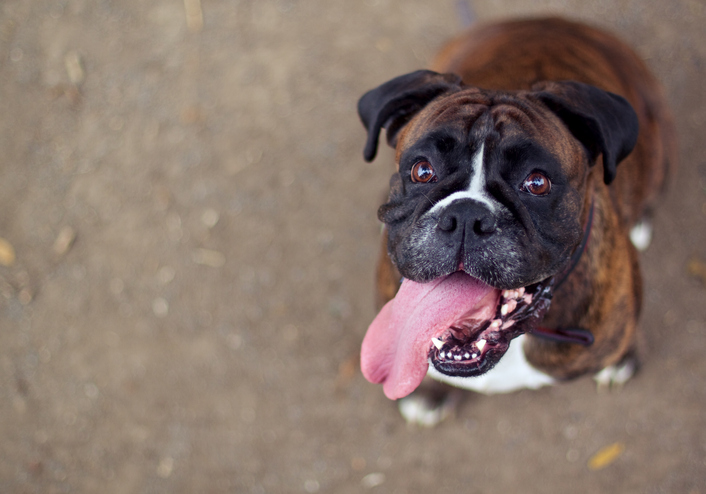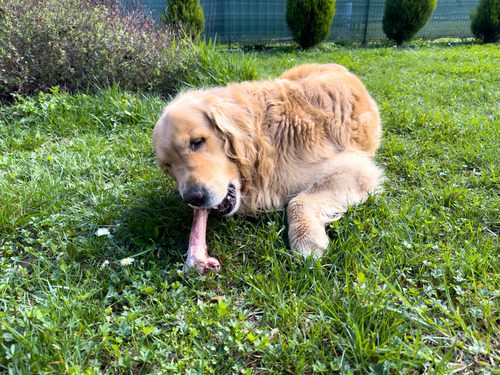Common Symptoms of Heatstroke in Dogs
Would you know how to recognize heatstroke if it happened to your dog? What are the most common symptoms of heatstroke in dogs to look out for? What should you do if you notice these symptoms in your own pet? This article will help you be able to recognize when your dog may be suffering from heatstroke, and at what stage the condition is in.

With summer just around the corner, it’s important to brush up on everything you need to know about canine heatstroke symptoms. Below, you’ll find a list of the most common symptoms of heatstroke in dogs to help you learn how to recognize the issue, and how severe the condition is, before it gets out of hand.
When in doubt, if you think your pet may have heatstroke or if you’re concerned about their health in general, you should always consult with a veterinarian or emergency vet. Your vet will be able to assess the situation and provide your dog with the treatment they need in a timely manner.
Mild Symptoms of Heatstroke in Dogs
When watching for this condition, the mild symptoms on this list are usually the first signs that your dog has heatstroke. By knowing the things on this list, you will know when your pet needs help before the condition gets worse.
4 common mild symptoms of heatstroke in dogs are:
Excessive Panting
One of the first symptoms of heatstroke in dogs is excessive panting. Of course, any dog is going to pant on a hot day, but excessive panting is recognizable by the effort it takes your dog’s body to perform. You may notice their sides heaving in and out as they pant.
Excessive Drooling
Along with excessive panting comes excessive drooling. This means any type of drooling that is more than normal for your dog. While each dog’s drooling habits are different, you can usually tell when your pet is drooling considerably more than they often do.
Lethargy
If your dog is experiencing mild heatstroke symptoms, they are likely to have very little energy and will become lethargic. They may not want to get up and move around because of how hot they are, and they may lay on their side to try to cool themselves off.
Weakness
As heatstroke progresses from mild to moderate symptoms, your dog may show signs of weakness along with their lethargy. Aside from being unwilling to get up and move around, they may be unable to do so because of the effect the heat is having on their body.
Moderate Symptoms
This condition starts to become a bit more serious when we enter into the moderate symptoms of heatstroke in dogs. While your dog hasn’t entered the severely dangerous part of the condition, you should still seek immediate veterinary care if you notice any of the below symptoms.
4 moderate symptoms of heatstroke in dogs include:
Elevated Heart Rate
If your dog moves into the moderate stage of heatstroke, they will likely have an elevated heart rate as their body tries to keep up with the heat. Feel their heart rate and try to count how many beats per minute they are having.
Elevated Body Temperature
The longer the heatstroke progresses, the more it will raise your dog’s body temperature. If possible, you can check their temperature with a thermometer; however, you can usually tell by touching your pet if their body temperature is much higher than normal. They may feel very hot to the touch.
Labored Breathing
Your dog may be having more difficulty breathing if they reach the moderate stage of heatstroke. They may wheeze or gasp for air, and you will likely be able to see their sides moving with every attempt to take a good breath.
Signs of Pain
Your dog’s pain signs may be different from another dog’s, and you know their body language best. If your dog is showing typical signs of pain, like hiding from you or crying, they may be experiencing moderate heatstroke.
However, some dogs do not have the energy or ability to show these signs as heatstroke progresses.
Severe Symptoms of Heatstroke in Dogs
When your pet starts showing severe signs of heatstroke, they need to be taken to the emergency vet right away. This condition can be life-threatening if your pet enters this stage and is not treated right away.
4 severe symptoms of heatstroke in dogs to look out for are:
Loss of Focus
If your dog reaches the severe stage of heatstroke, they may be unable to focus on anything around them anymore. They may not pay attention to you, food, water, or anything else. This is a serious symptom that requires immediate medical attention from an emergency vet.
Collapse
Dogs who are suffering from severe heatstroke may also collapse suddenly, if they have not done so already. If your dog has been up and moving around until this point, they may lose consciousness and collapse as the heat becomes too unbearable for their body to tolerate.
Seizure
Sometimes, dogs who are suffering from severe heatstroke experience seizures in the late stages of the condition. They may collapse suddenly and make strange paddling motions with their paws and legs, or they may simply lose consciousness during a seizure instead.
A seizure alone is not a symptom of heatstroke in dogs, but when coupled with others on this list, it is a very serious emergency situation.
Death
Sadly, when dogs reach the final stages of heatstroke, it is almost impossible for them to survive. Even if the dog is taken to an emergency vet at this point, there may be little the vet can do to help the dog recover from such a serious condition.
Go to the Vet for All Symptoms of Heatstroke in Dogs
With the help of this information, you should be well on your way to a better understanding of heatstroke in dogs. If you suspect your dog is showing any of these symptoms, don’t wait; take them to the vet or emergency vet right away.
During the hottest part of the year, keep your dog indoors or at least in the shade and offer plenty of cool, clean water. Never leave your dog unattended in a vehicle, even on a mild day. A little care goes a long way in prevent heatstroke in your pet.
For more information about symptoms of heatstroke in dogs, book an appointment or call any of our Heart + Paw locations, where our team will answer all the questions you may have about your pet’s health. When it comes to your pet’s wellbeing, it’s always better to be safe than sorry. You should never wait when it comes to making sure your pet stays healthy.
Recent Posts
Can Dogs Eat Ham?
Ham is a popular meat found on many dinner tables, especially during the holidays. As a dog…
8 Signs and Symptoms of Diabetes in Dogs
Caring for a dog means being tuned in to the subtle changes that can reveal their overall…
Why Dogs Can’t Eat Chocolate and Tips for Keeping This Sweet Treat Out of Their Reach
Chocolate is a beloved indulgence for us, but for our dogs, it’s a hidden danger that can…
Why Cat Teeth Cleaning is Important For Your Pet’s Health
As a cat owner, you know how important it is to care for your feline friend’s overall…
Cat Body Language: A Guide To Understand What Your Cat is Telling You
Imagine trying to communicate without words, relying solely on subtle gestures, glances, and movements. This is how…
About Us
Heart + Paw was founded in 2018 by Chief Veterinary Officer Dr. George Melillo, who currently serves the Mid-Atlantic area. Heart + Paw offers a combination of veterinary care, pet grooming, and dog daycare to help be a resource in your pet parenthood journey.
We'd Love to Meet Your Four-Legged Friends
Find out how the friendly veterinary team at your local Heart + Paw can help your pets live longer, healthier lives by searching for a location near you.





